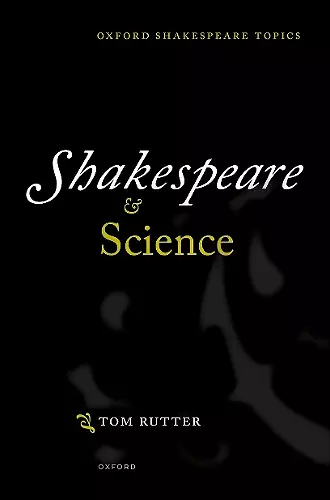Shakespeare and Science
Format:Hardback
Publisher:Oxford University Press
Published:19th Sep '24
Should be back in stock very soon

As a figurehead for the literary humanities, and a dramatist whose plays feature fairies, ghosts, and spirits, Shakespeare may not be the first author that comes to mind when thinking about science. Tom Rutter shows, however, that in his plays and poetry Shakespeare made detailed use of the knowledge and theories of the cosmos, the natural world, and human biology that were available to him. These range from astronomical and anatomical ideas derived from medieval scholars, Islamic philosophers, and ancient Greek and Roman authorities, through to the challenges issued to those earlier models by more recent figures such as Copernicus and Vesalius. Shakespeare's treatment of these materials was informed by the poetic and dramatic media in which he worked; the dialogic nature of drama enabled an approach that could be provisional, exploratory, and tolerant of uncertainty and contradiction. Shakespeare made the early modern playhouse a venue for the production of scientific understanding through performance, illusion, and the creative use of space. As well as surveying current scholarship that contextualizes Shakespeare's work in relation to histories of meteorology, matter theory, humoral physiology, racialization, mathematics, and more, Shakespeare and Science offers detailed original readings of a variety of texts including the Histories, Hamlet, Antony and Cleopatra, Othello, King Lear, The Tempest, the Sonnets, and Lucrece. It also makes extensive reference to works by Shakespeare's near-contemporaries such as Robert Recorde, William Fulke, Juan Huarte, and Thomas Elyot. Its four chapters focus on astronomy and meteorology, matter, the body, and mathematics. Rutter's overall approach is informed by recent studies that interrogate 'science' as a concept, and that question both the boundary between literature and science and the idea of a seventeenth-century 'scientific revolution'.
ISBN: 9780192898548
Dimensions: 211mm x 142mm x 18mm
Weight: 356g
208 pages